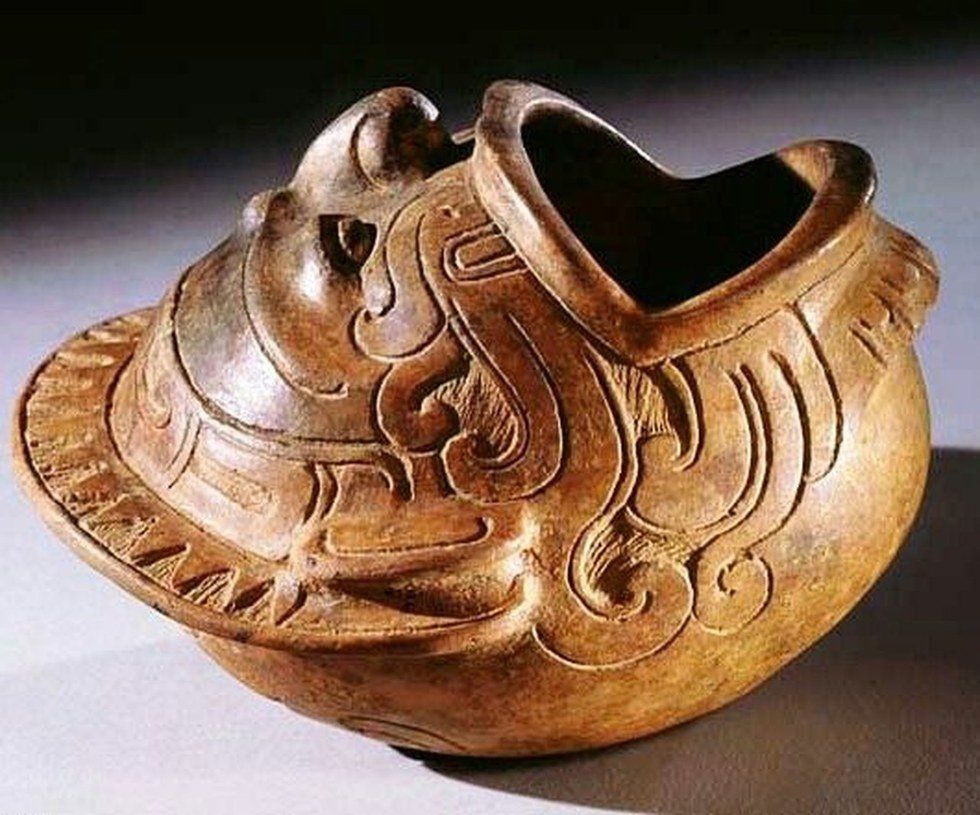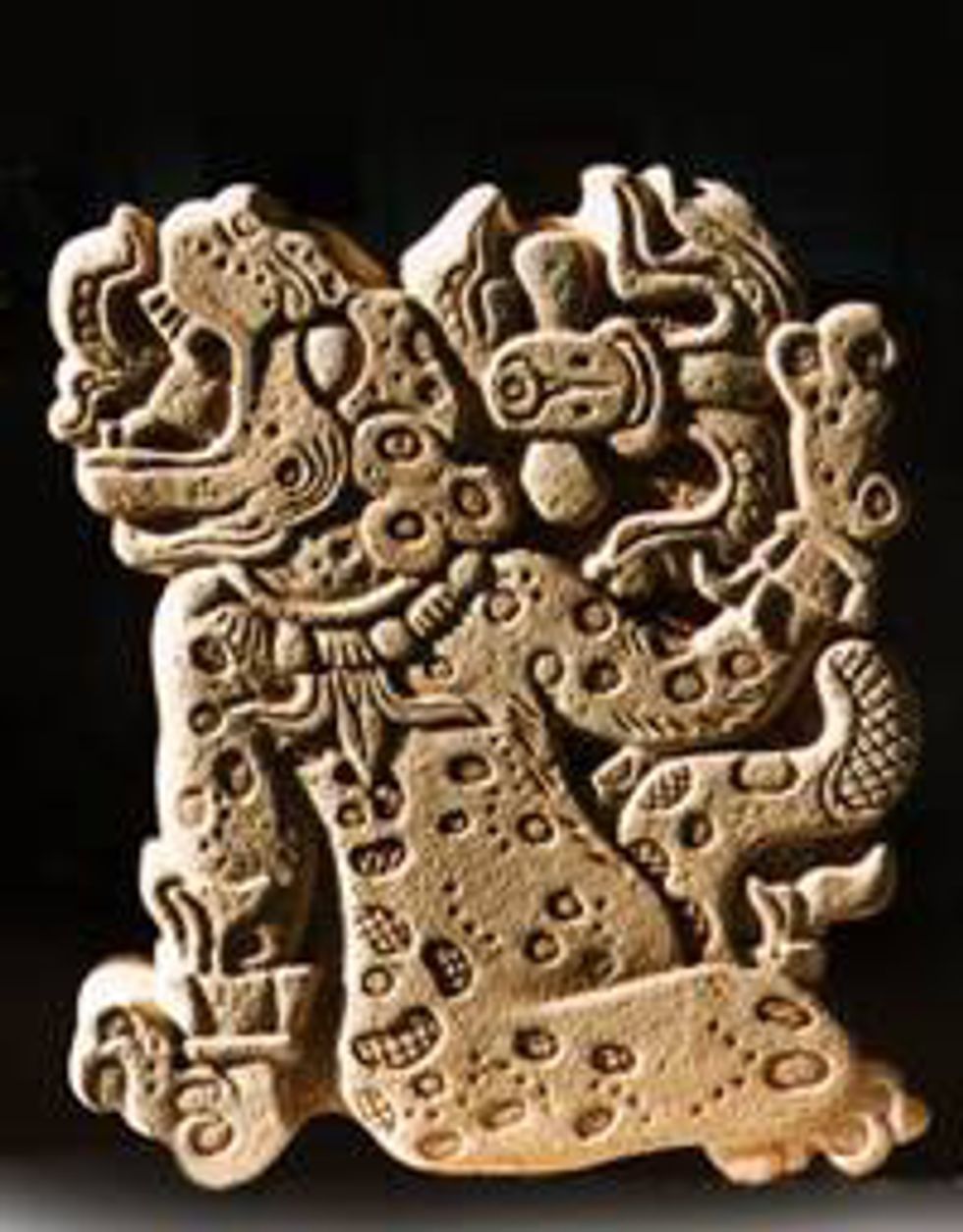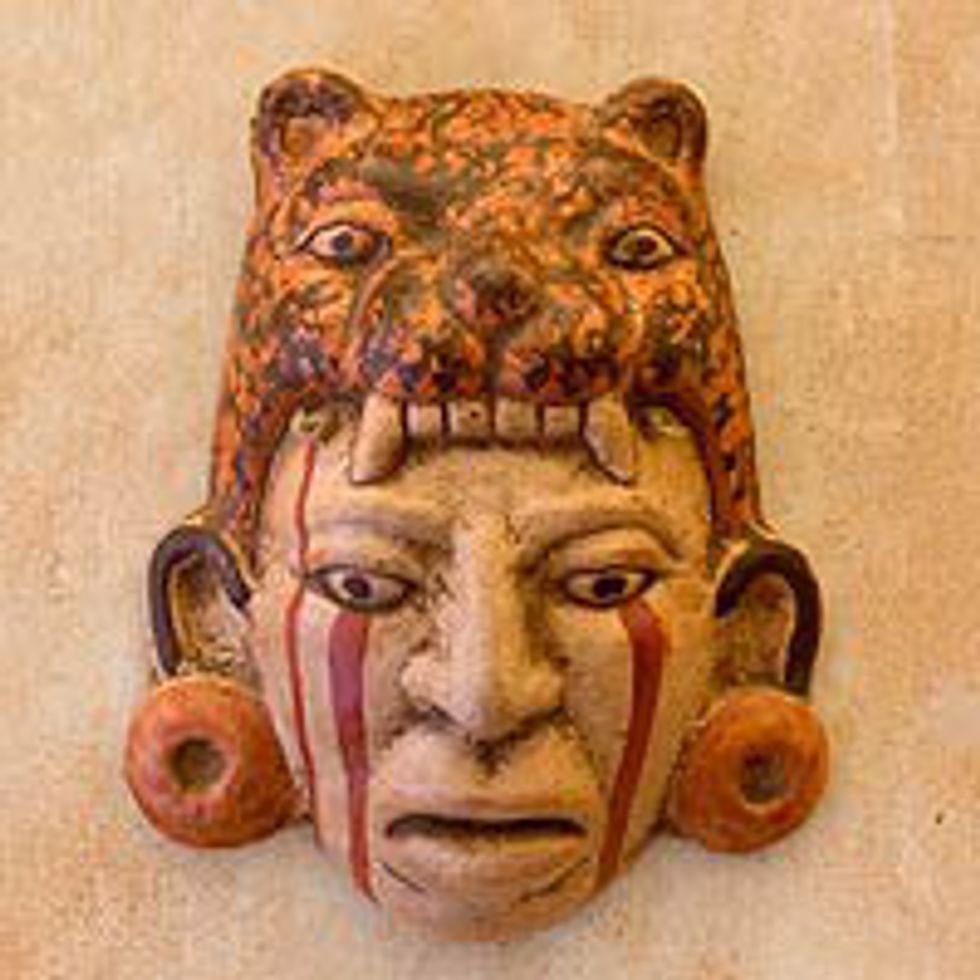Let's Go To The Nahual To See Jaguars
Long ago in Mesoamerican culture, shamans used jaguar masks to transport to the Nahual. The Nahual are animal spirits that join with the shaman to aid in spiritual vision, knowledge, healing of the sick, and hunting. Shamans were known to be the spiritual leaders in a community. Widely, this particular animal is known for its speed and ability to catch the prey they desire. Jaguars are extremely significant in Mexico. On this website, it is commented on how valuable jaguars are, “The Jaguar is America’s largest and most powerful cat and for more than three thousand years it has been Mexico’s most enduring symbolic animal” (mexicolore.co.uk/aztecs). Jaguars are unique as for their use for humans. Jaguars, just like other predator animals, hunt and kill other animals to get what they want. This animal can be independent and does not need the pact to get get the job done. “The Jaguar is representative of power, ferocity, and valor; he is the embodiment of aggressiveness”(www.pure-spirit.com).
Out of the many cultures, Mayans also used jaguar masks. “In Mayan mythology, the jaguar was seen as the ruler of the Underworld, and as such, a symbol of the night, sun, and darkness” (www.pure-spirit.com). Shamans believed the spirits from jaguars allowed them to travel to different worlds. When shamans transformed into a jaguar, their personality would completely change. “Either sex holding this power animal have the potential to develop clairaudience, the ability to hear communications from other forms of life or dimensions and should trust their thoughts and inner visions as they based in reality”(shamanicjourney.com). The Mayans carved masks out of wood and added jaguar animal prints to them. Jaguars became a style in the Mayan culture. The masks would be worn at ceremonies and dances. A person turning into an animal spiritually was the common thing in Mexico. This was looked at as normal. “The jaguar was the most feared and respected beast in the Mesoamerican world. The jaguar gods of the Maya were associated with night, caves and the underworld, like the jaguar itself, and were sometimes associated with shamanic transformations” (www.michaelgoard.com). Also, in relation to Mayans, the community had sacred dances called Tecuani. The word Tecuani means jaguar. “...there is a good deal for discussion of the size of the jaguar. The tlacololeros then burn the plot of land in preparation for the next planting. While the land is burning pairs of dancers whip each other, often violently, on their padded costumes, the sounds of the whip stimulating the sound of fire”(Peter T. Markman, 11). This is a description of the how the dance occurred.
The purpose for the shamans transforming into jaguars are from a wide range of things. They wanted an animal that was extremely powerful and vicious. Not an animal that was known to be soft and delicate against their prey. “When realism is the goal, anything detracts from the illusion of reality is seen as a mistake”(Vivian Carol Sobchack, 53). Coming in sync with the spirits was seriously valued. This was something that could not be falsified or played with. A shaman had to seriously relax and be calm when about to transition. To describe the transformation of the shamans, “According to the Mayan beliefs, the journey of the sun across the sky and the darkness of night stood for the eternal journey of human consciousness and transformation. The sun at middays was compared to the Eagle, flying thing in the sky. Then it plunges below the horizon, just as we plunge into the dark where the face our spiritual challenges and are transformed. The hidden sun was said to be Jaguar, whose spotted skin symbolized the stars glittering in the night sky”(www.animalspirits.com). This was how the Nahual worked when Shamans used it.
One of the most common features of jaguars are their teeth. The teeth of jaguars are nice, firm, and sharp. The masks carved in Mexico and by the Mayans depicted largely shaped teeth to resemble the actual animal. Generally the masks had spots on them. The mouth of the masks were a frown. This was the key component to know which mask was for transformation. In the Mayan culture, jaguar skin is used for many reasons, “The skin of the jaguar was used in many costumes, to denote high rank, power, authority and an association with the gods, especially in times of war” (www.angelfire.com). The notable Mayan representations of jaguars discussed below show both the similarities and the differences in depictions of jaguars in Mayan art.
In Figure 1, The Path of the Jaguar, was made by the Mayans in Mexico. The Mayans valued jaguars because of their power and their hunting capabilities. This statue symbolizes the paths of jaguars. The statue is a jaguar that was used by the shamans. The color of the statue is off white and a kind of cream color. The paws of the jaguar are big and the first two fingers are chipped off. The eyes are of the jaguar are circular and sort of look like a kaleidoscope. The mouth is opened wide with big teeth inside. The hair is made from scarification. The jaguar is faced in a particular stance as if it is about jump. “Path of the Jaguar winds its way upward into the highlands of Chiapas, where we’ll see variations in dress, unique agricultural adaptation, as well as ritual, faith and symbolism that has remained unchanged for more than 2000 years or been melded with European colonial and Christian imprints that sometimes mimic them” (www.viajesvertiz.com). The Path of the Jaguar was used for spiritual and faith purposes.
Figure 2, Jaguar Head, was also carved by the Mayans. Jaguar Head serves a different approach than the first statue. This statue’s color is off white and sort of a cream color. This statute gives more of a goofy or interpersonal feeling. This piece is a baby jaguar before it reaches adulthood. The teeth are a medium size and has two side teeth. The ears are small and look like the baby jaguar could hardly hear anything. The nostrils looks like they are beginning to grow in as they aged in adults. There is no hair on the statute. The tongue is hanging out of the mouth and the tongue is a little bit small. It looks like a baby’s tongue. The head is positioned in a normal stance and not in attack mode like in Path of the Jaguar (Fig 1). Mayans look at jaguars as a way to come in contact with their ancestors, who are deities. In this articles it says, “the people of ancient Mexico worshipped deities to ensure well-being in life and afterlife” (www.allartnews.com). The baby jaguars are just as well liked as the adult jaguars.
In Figure 3, The Jaguar God Of Terrestrial Fire, this statue was used doing fire rituals. This piece of artwork looks rather scary. The entire statue is big and looks very alive. The ears are shaped like megaphones and they are extremely big. The mouth is opened midway and the teeth are not big, but look very sharp. There are holes in the lower part of the cheeks. There is a piece of clothing placed around the neck of the God. The jaguar is positioned in a prance stance as if it is about to jump on someone and attack them. The claws of the jaguar are extremely sharp and very noticeable. The Jaguar God Of Terrestrial Fire was used in incense burners. “He is often represented on incense burners, and is connected to fire rituals. This is related to battle and his face is often shown on shields”(www.mayankids.com). There are certain details that are recognized, “The Jaguar God of Terrestrial Fire is recognizable by a ‘cruller’ around the eyes (making a loop over over the nose), jaguar ears, and jaguar fangs” (www.mayankids.com). This statue was very valued in the Mayan culture.
In Figure 4, Water Lily Jaguar, is the god of the underworld. A water lily jaguar is recognized because it has a water lily placed on its head. “The water-lily jaguar is anthropomorphic form of a god” (www.michaelgoard.com). The artwork is made of cast stone. “This jaguar god moves and acts like a human”(www.michaelgoard.com). The head of the jaguar faces upward. The tongue is shown curled up in the air as if it about to catch something. There is a necklace placed around the neck of this jaguar. The necklace is called a death eye collar. In this article it explains, “ The death eye collar is used as an attire in a sacrificial death dance”(www.michaelgoard.com). This jaguar is an adult with ridges that look like the spots of a real jaguar. The color of the jaguar is tan. There is a lily flower placed on the top of the head. The people of the Mayan community loved deities and thought of a way of getting to them, by using this piece. The jaguar looks like it is being seen as royalty because of how the arms are positioned. The left arm is positioned downward and the right arm is positioned upward holding the lily on the head. There is a little touch of scarification on the tail of the jaguar.
Figure 5, Mayan Jaguar Priest, is a notable art piece because of the significance of the Mayan culture. This mask is made out of ceramics. This piece is showing the head the jaguar eating a priest’s head. Blood is running down from the priest’s face. Whenever jaguars are used in Mayan artwork it represents the crossover from the real world to the spiritual world. The head of the jaguar artwork has jade markings on them and they are black. Jade and ceramics were used in a lot in Mayan culture. This artwork makes me feel creeped out because of the eyes. The eyes have am extremely eerie effect about them. The frown of this mask makes the artwork look sad or very gloomy. The jaguar’s mouth is very large with big teeth. The jaguar is important in his mask because the jaguar is a figure that was relied on by the priests and shamans. In this article, it says,”Ancient tales speak of the jaguar as a shape-shifter, as well as a companion to Mayan priests or Shaman.” (ehow.com). Mayans wore this mask to frighten their enemies, “Some scholars believe that the masks were worn by Mayan warriors in order to frighten enemies, while others believe that they were worn purely because of the religious association” (ehow.com). This mask and other masks were made in different ways, “The Mayans did not have metal tools, so masks were made with simple hand-tools constructed of bone, animal parts, stone, soil and wood” (ehow.com). “Jaguar masks were also made of obsidian, carved stone, wood or shell. Gold masks were made for priests and royalty, as well as for use in the temple or during religious occasions. This mask was made for a purpose. “(ehow.com). This art piece speaks for a lot of other masks in the Mayan culture. This mask was crafted for only the royalty and people transforming into an animal spirit.
All of the artwork represents the value of jaguars from the Mayan Culture. The Mayan art is similar to other cultures such as Islamic Art and Oceania/ Pacific because of the ceremonial dances, masks, and holding a figure to high possession but Mayans concentrate on animals. The artworks above are used to help transform into the Nahual. Most of the art used the same style but were created by different artists. Some of the artworks discussed have more of a serious significance than others. In most of the art used in the Nahual process, the animal in the art wore a headdress, which represented the shaman as royalty. The art became a connection with the shamans. Shamans believed these figures allowed them to come in sync with the spirits. Jaguars were the iconic gateway for allowing all of this to happen. All of the pieces are different but serve one purpose. The purpose is having the excellent characteristics of a jaguar.
List of Illustrations
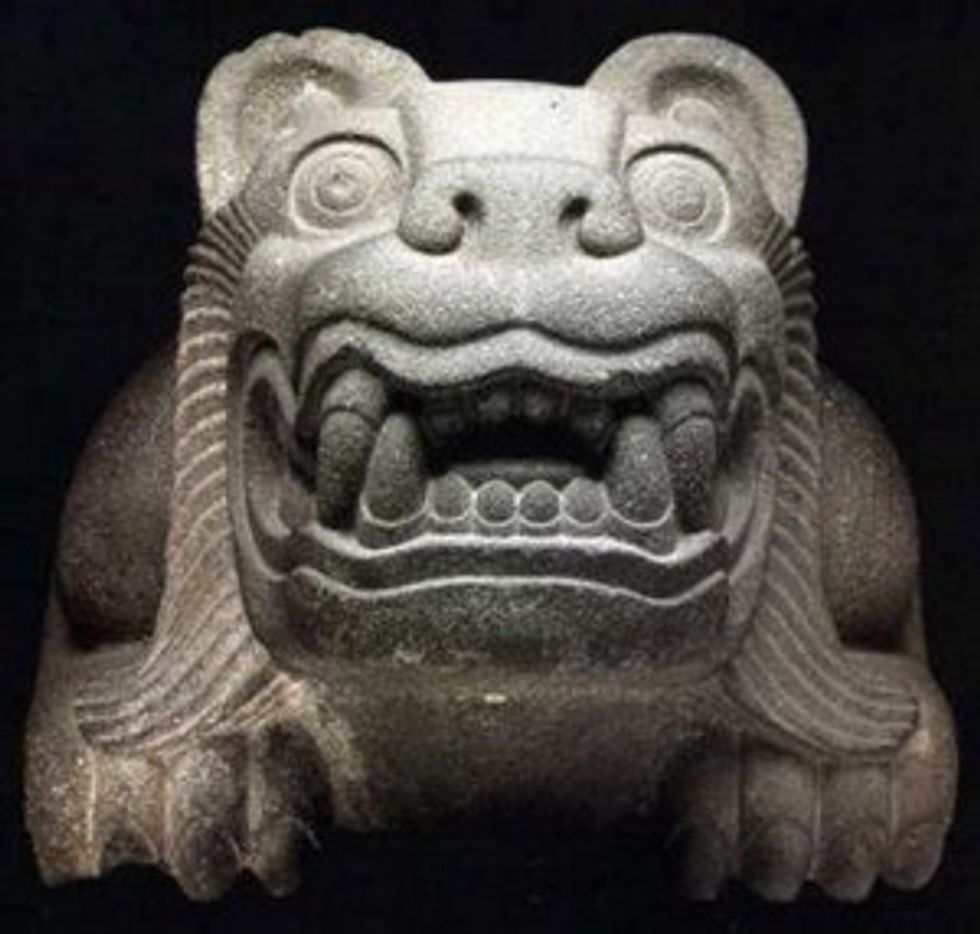
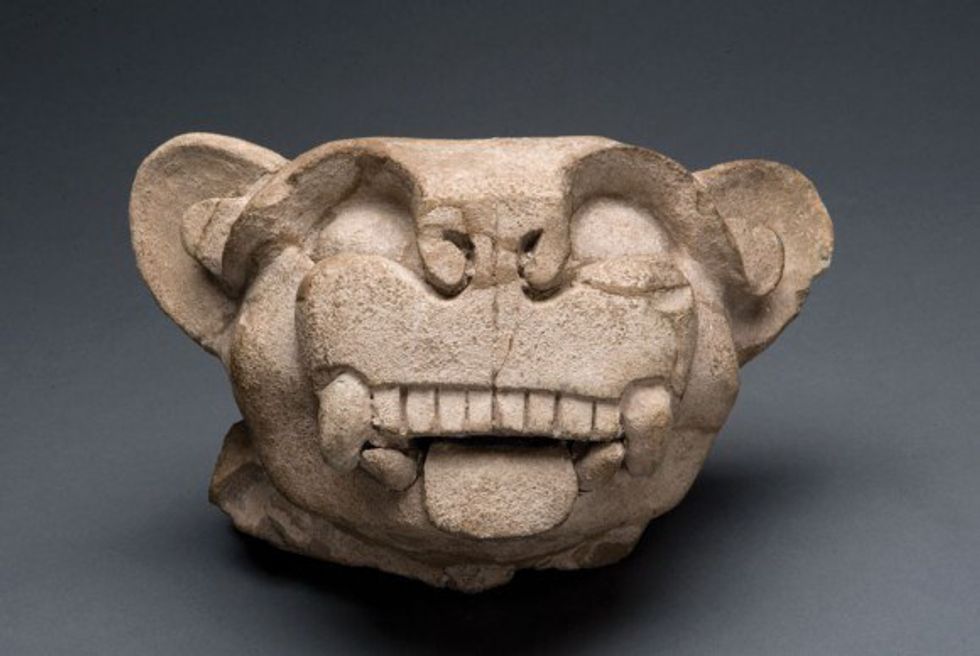
Figure 1 Figure 2
The Path of the Jaguar Jaguar Head
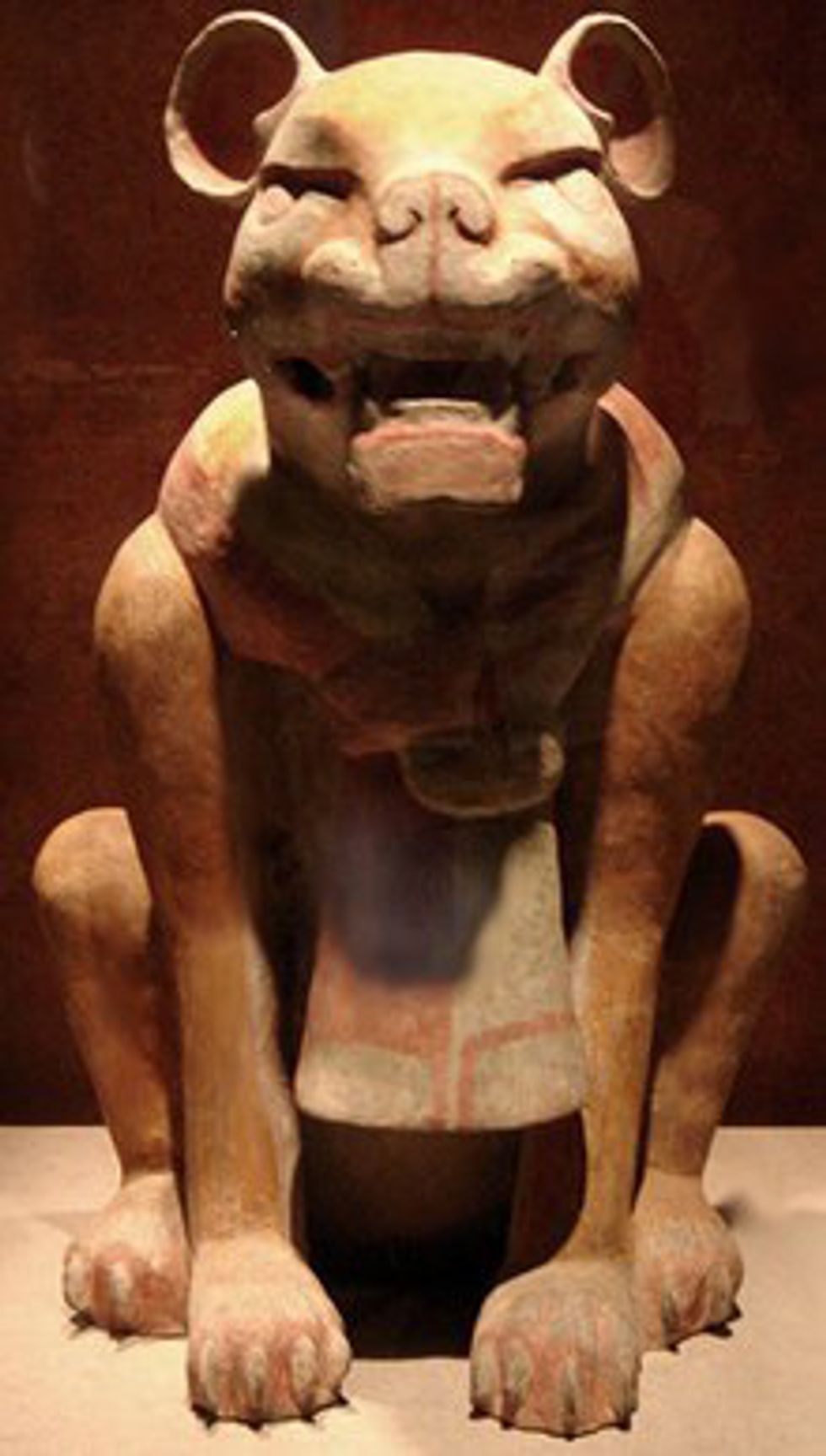
Figure 3 Figure 4
The Jaguar God Of Terrestrial Fire Water Lily Jaguar
Figure 5
Mayan Jaguar Priest
Work Cited
Design & Marketing Services Provided by EMarketConsultants Inc. "The Path of the Jaguar ? Immerse Yourself in Mayan History and Lore." | Viajes Vertiz Travel Services. Viajes Vértiz S.A. De C.V.S.A. De C.V., 9 Dec. 2009. Web.10 Dec. 2015.
Gordon, Michael. "Michael Goard_Maya Animal Garden Stones_in Cast Stone." Michael Goard_Maya Animsl Garden Stones_in Cast Stone. N.p., n.d. Web. 10 Dec. 2015.
"Las Artes De México on View at the Utah Museum of Fine Arts." All Art News RSS. All Art News, n.d. Web. 10 Dec. 2015.
Markman, Peter T., and Roberta H. Markman. Masks of the Spirit: Image and Metaphor in Mesoamerica. Berkeley: U of California, 1989. Print.
"More Animal Symbolism." Jaguar Symbolism. Pure Spirit Animal Communication and Training Solutions, n.d. Web. 10 Dec. 2015.
Morris, Randa. "Mayan Jaguar Masks Information." EHow. Demand Media, 2015. Web. 10 Dec. 2015.
Sobchack, Vivian Carol. Meta-morphing: Visual Transformation and the Culture of Quick-change. Minneapolis: U of Minnesota, 2000. Print.
Yucatan Times. "The Black Jaguar: A Powerful Ancient Maya Symbol." The Yucatan Times RSS. N.p., 27 Nov. 2012. Web. 10 Dec. 2015.



